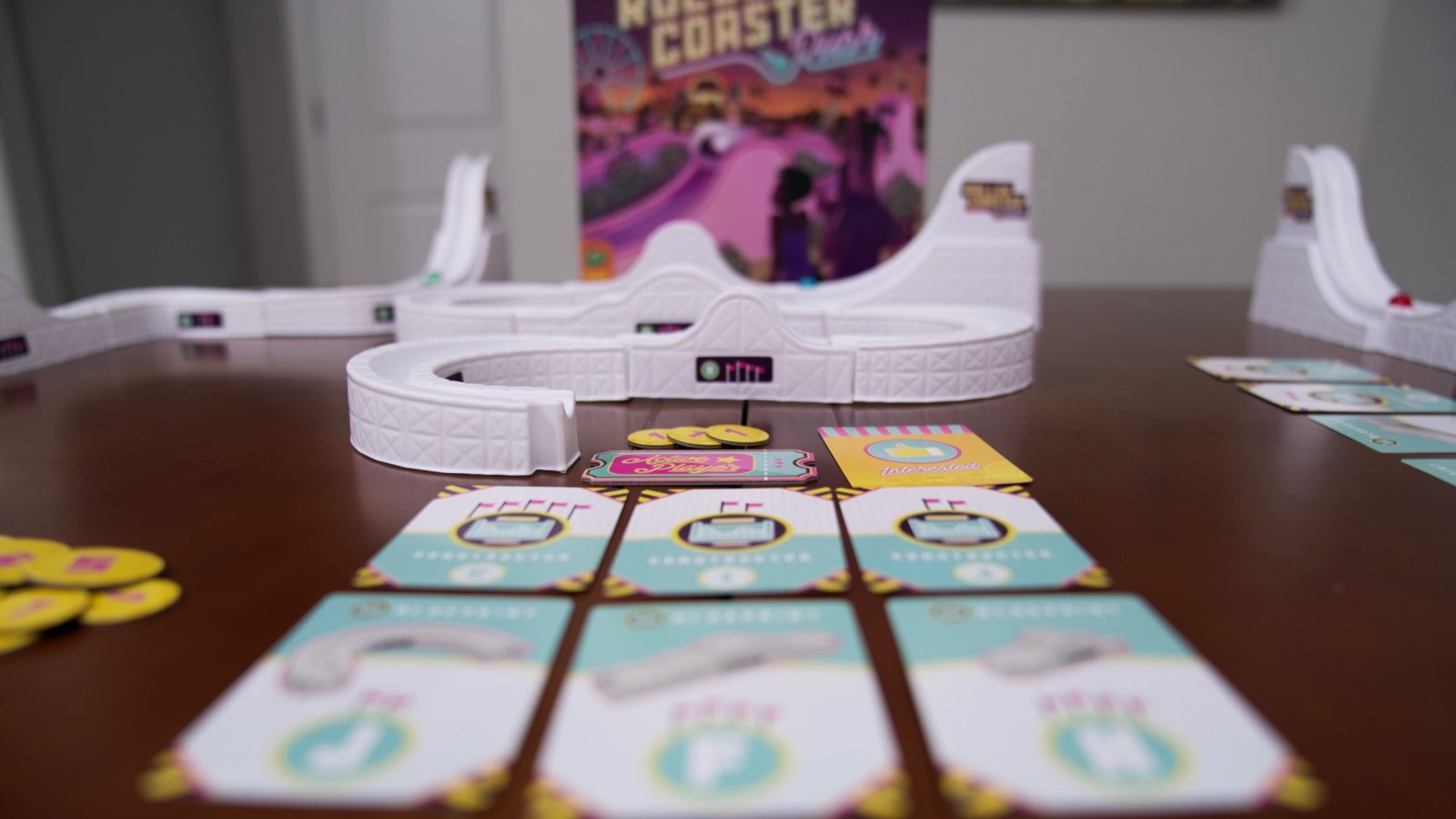
Roller Coaster Rush invites you to unleash your inner theme park mogul, promising a thrilling ride of strategic planning and resource management. But, does it soar to the heights of excitement or does it nosedive into the valley of disappointment? Let’s find out.
The Twists and Turns
In Roller Coaster Rush players start with a basic toolkit: $20, a marble, an investor card, and a set of blueprint cards. The initial phase is all about using these blueprints to design a prototype of your roller coaster, laying the groundwork for what’s to come.
The game’s core excitement unfolds in the auction phase. Here, players engage in a strategic duel, bidding for essential track pieces that can make or break their roller coaster designs. The stakes in these auctions are not just about winning or losing track pieces. Following each auction, regardless of the outcome, players flip their investor card. This pivotal moment opens up the opportunity for another strategic action — demoing the coaster for investors. Demonstrating your coaster to investors is not just a side quest; it’s a crucial step in garnering the funds necessary for those intense, game-changing auctions.
As the game progresses, players work towards the Grand Opening, the climax of all their planning and strategizing. Here, each player showcases their completed coaster to the public by running their marble through their coaster. Victory points are awarded based on the performance of the marble, each track piece contributing to the score based on the number of flag symbols it bears. The tension is palpable as players count their scores, and the one with the most points emerges as the ultimate roller coaster architect.

Where it Derails
Despite its innovative concept and engaging mechanics, Roller Coaster Rush encounters significant pitfalls in its physical components. The tracks, made from a less durable plastic, are susceptible to warping. This issue extends beyond a mere aesthetic flaw; it fundamentally disrupts the gameplay, affecting the marble’s ability to successfully navigate the course. Moreover, the marble itself, lacking in weight, fails to deliver the momentum needed for a truly exhilarating ride, thus detracting from the core experience of the game. For instance, players who find themselves with an abundance of hill track pieces face an uphill battle, quite literally, as their marble’s movement is severely limited, impacting both the excitement of the gameplay and the players’ strategic options.

The Final Loop
Roller Coaster Rush promises a ride filled with strategic twists and creative turns but ultimately falls short of delivering a fully satisfying board game experience. The game, rich in concept and engaging in its track auctioning and building, is unfortunately let down by its physical execution. While the novel concept may attract some, for many players, Roller Coaster Rush might feel like a roller coaster that couldn’t quite make it up the highest hill. It’s a game that might only appeal to those willing to overlook its many flaws in favor of its novel concept. For most, however, it is likely to be a letdown, failing to deliver the thrilling experience it promises.
Roller Coaster Rush
Mediocre
Roller Coaster Rush promises a ride filled with strategic twists and creative turns but ultimately falls short of delivering a fully satisfying board game experience. The game, rich in concept and engaging in its track auctioning and building, is unfortunately let down by its physical execution. While the novel concept may attract some, for many players, Roller Coaster Rush might feel like a roller coaster that couldn't quite make it up the highest hill. It's a game that might only appeal to those willing to overlook its many flaws in favor of its novel concept. For most, however, it is likely to be a letdown, failing to deliver the thrilling experience it promises.
Pros
- Unique concept stands out offering a fresh and intriguing theme
- The physical aspect of constructing a coaster and running a marble through it is engaging
- Auctioning adds a layer of competition
Cons
- Poor component quality detracts from the excitement
- Unlucky draw of multiple hill track pieces can limit your income hindering your changes during the auction phase
